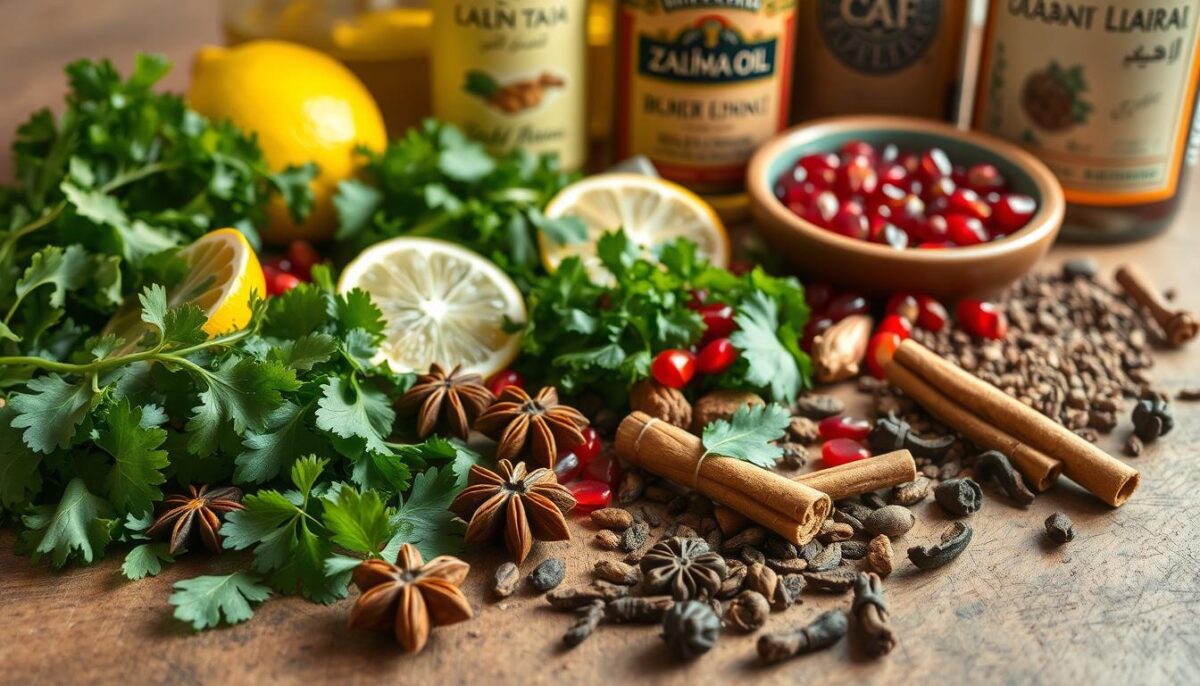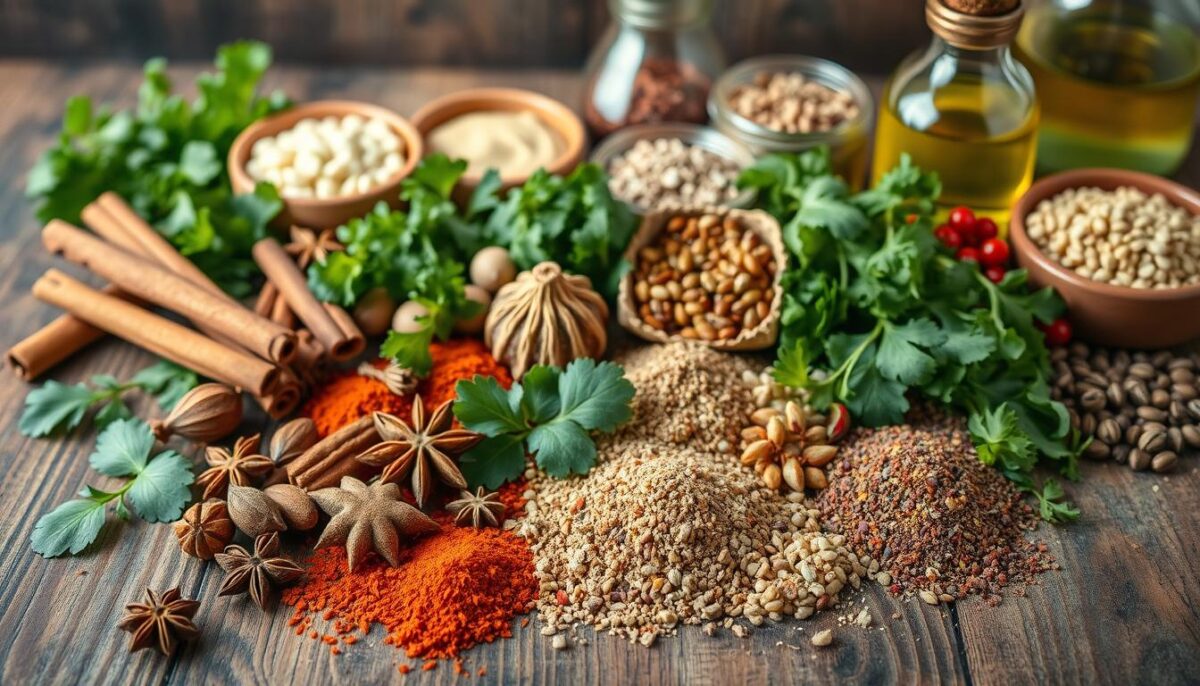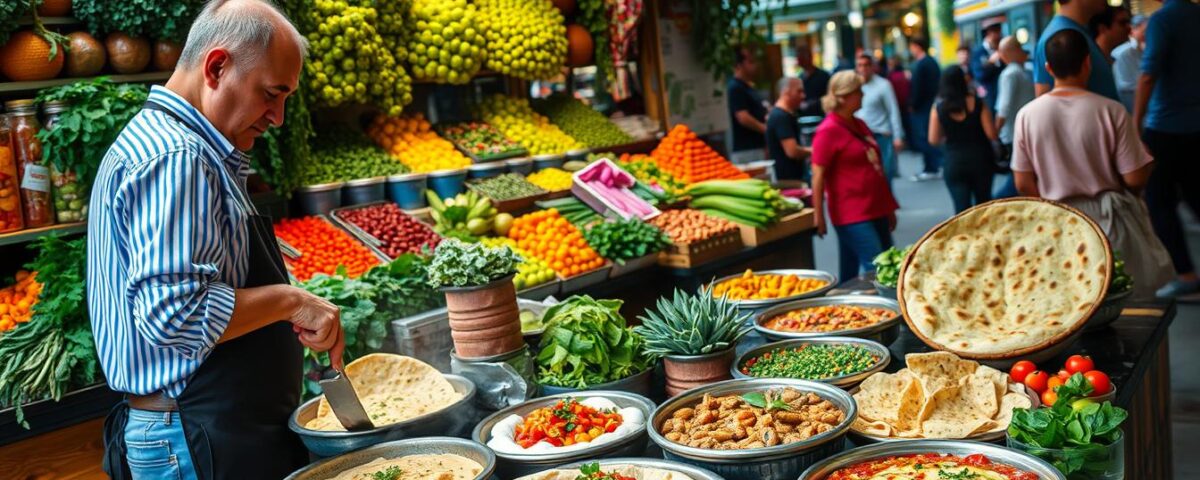
How to Taste the Spice and Soul of Lima in Just One Day
June 14, 2025
5 Unmissable Food Stops When Visiting San Francisco
June 14, 2025Did you know this coastal city has over 2,000 eateries blending 5,000 years of history into every bite? My first meal here wasn’t just dinner—it was a revelation. I still remember the smoky aroma of grilled meats mingling with zesty lemon and garlic as I wandered a buzzing night market. Each stall felt like a chapter in a story where ancient recipes meet modern creativity.
What makes the dishes here unforgettable isn’t just their intensity. It’s the way they balance tradition with innovation. Think creamy hummus drizzled with pomegranate molasses, or crispy falafel stuffed with mint and pickled turnips. Every flavor has a purpose, a nod to the crossroads of cultures that define this place.
Walking through its streets, I realized how deeply the past shapes the present. Old family recipes share menus with avant-garde fusion plates, all served under strings of fairy lights. The energy is contagious—a mix of laughter, sizzling pans, and the clink of glasses toasting to life’s simple joys.
This isn’t just about eating. It’s about discovering how a meal can weave together threads of resilience, joy, and community. Let’s dive into the dishes, stories, and hidden gems that turned my trip into a lifelong love affair.
Key Takeaways
- Beirut’s culinary scene thrives on balancing rich traditions with modern twists.
- The city’s history is a key ingredient in its diverse and vibrant dishes.
- Local meals often reflect a harmonious blend of Eastern and Western influences.
- Exploring street markets offers authentic insights into daily life and culture.
- Every dish tells a story of resilience, creativity, and shared joy.
Exploring Beirut’s Culinary Landscape
I never expected a simple street vendor’s wrap to rewrite my understanding of culinary heritage. My initiation began at a market stall where smoke curled around skewers of marinated chicken, each glistening with olive oil pressed from groves older than my grandparents. Nearby, a vendor cracked open warm pita bread with hands that moved like they’d done this for generations.
My First Encounter with Local Food Culture
At Mustafa Sahyoun’s falafel stand, I watched chickpea dough drop into bubbling oil—a technique unchanged since 1948. “We marinate the meat overnight in lemon and seven cloves of garlic,” a cook explained, handing me a wrap dripping with tahini. Families clustered around plastic tables, sharing plates of hummus dotted with paprika. Every dish felt like an heirloom, perfected through decades of repetition.
Where Past Meets Present on the Plate
Traditional Lebanese cooking relies on simplicity: fresh ingredients, garlic-infused sauces, and recipes guarded like family secrets. Yet chefs here reimagine classics—think lamb kebabs glazed with pomegranate reduction, or baklava filled with dark chocolate. The table below shows how time-honored staples evolve:
| Dish | Traditional Version | Modern Twist |
|---|---|---|
| Falafel | Chickpeas + parsley | Beetroot-infused, served with mango sauce |
| Shawarma | Marinated meat + garlic sauce | Duck breast shawarma with fig compote |
| Hummus | Chickpeas + tahini | Black sesame hummus with truffle oil |
What struck me most wasn’t the innovation itself, but how it honored roots. Even avant-garde plates kept that essential balance—bright lemon cutting through rich meat, earthy spices grounding sweet modern additions. It’s a dialogue between eras, served on shared platters.
Authentic Lebanese Dishes with a Twist
Nothing prepared me for the burst of flavors in a deconstructed knafeh dessert at a local café. The crunch of shredded pastry layered with rose-scented cheese foam made me rethink everything I knew about traditional desserts. This is where centuries-old recipes shake hands with tomorrow’s culinary imagination.
My Experience with Traditional Recipes
I learned the magic of balance while rolling grape leaves with my aunt. Her recipe required exact ratios of lemon juice, cinnamon, and fresh mint—ingredients unchanged since her childhood. “The spices sing when you listen,” she’d say, dusting phyllo dough with pistachio powder.
Modern Adaptations and Creative Platings
Chefs here treat classics like blank canvases. I once watched a cook stuff sfouf cake with salted caramel, creating a sweet-savory harmony. Another transformed maamoul cookies into bite-sized domes filled with dark chocolate ganache. The table below shows this evolution:
| Traditional Dish | Modern Element | Key Ingredient |
|---|---|---|
| Baklava | Matcha-infused syrup | Pistachio |
| Muhalabia | Lavender foam topping | Rosewater |
| Atayef | Dulce de leche filling | Orange blossom |
What makes these dishes work? Respect for foundation. Even wild experiments keep core flavors intact—cardamom still warms the chocolate, and orange blossom still perfumes the cream. It’s innovation with roots, served on slate plates.
Beirut bold flavor food
Watching a chef layer spices into a simmering pot changed how I view everyday meals. This city’s magic lies in transforming humble ingredients into symphonies of taste. Every bite feels intentional—like generations whispered secrets into the mixing bowl.

Ingredients and Spices That Make a Difference
Semolina became my obsession after tasting it in a golden pilaf studded with pine nuts. Locals use this wheat gem to add texture to desserts and savory dishes alike. “It’s the backbone of our comfort food,” a cook told me while shaping dough for sfiha pastries.
Tomatoes take center stage in vibrant sauces that coat everything from lentils to lamb. I learned their sweetness gets amplified when slow-cooked with cinnamon and cloves. One chef revealed her trick: “Roast them until caramelized, then blend with garlic—it’s like liquid sunlight.”
Artisanal cheese varieties elevate simple dishes. I still dream about halloumi seared with honey-drizzled figs. Aged kashkaval adds depth to stews, melting into ribbons that cling to chickpeas and tender meat.
What ties it all together? Spices measured with precision. A pinch of sumac brightens sauces, while toasted cumin seeds ground earthy notes into pilaf. These aren’t just flavors—they’re stories bottled in tiny jars, waiting to transform your plate.
Global Inspirations: From Mexico to Beirut
I once stumbled upon a Mexico City café serving hibiscus-infused enchiladas that tasted oddly familiar. It wasn’t until I returned to Beirut that I recognized the thread connecting these two culinary worlds—both transform humble staples into vibrant celebrations of life.
Stories of Fusion Desserts and Savory Delights
Living in Oaxaca taught me how beans and rice anchor meals across cultures. Just as Mexican cooks layer tortillas with mole, Lebanese chefs stuff grape leaves with spiced bulgur. Both traditions celebrate grains as edible art.
At a Beirut pop-up dinner, I tasted duck shawarma tacos drizzled with avocado-tahini sauce. The chef grinned: “Why choose between za’atar and chili powder when they dance so well together?”
| Mexican Dish | Lebanese Twist | Shared Ingredient |
|---|---|---|
| Tamales | Bulgur-stuffed vine leaves | Corn husks/grape leaves |
| Horchata | Almond-mint lemonade | Cinnamon |
| Churros | Orange blossom loukoumades | Fried dough |
Even drink cultures merge here. Arak’s anise notes mirror Mexico’s tejate—both frothy, fragrant, and tied to communal joy. One sip transports you across the world while grounding you in shared human creativity.
What unites these kitchens? Respect for heritage and fearless reinvention. Whether folding chocolate into baklava or blending chipotle into toum, every bite becomes a passport stamp.
Ingredients and Spices that Define Bold Flavors
My hands still smell of garlic from last night’s cooking lesson with a Beirut chef. She taught me how local kitchens turn simple elements into flavor explosions. “Our pantry is our compass,” she said, gesturing to jars of golden olive oil and baskets of fresh vegetables.

Olive Oil, Garlic, and Traditional Staples
Extra-virgin olive oil forms the base of nearly every dish here. I watched a cook drizzle it over roasted eggplant, transforming the humble vegetables into silky moutabal. Garlic paste mixed with lemon becomes toum—a creamy emulsion that lifts grilled meats and stews.
Local markets showcase seasonal stars like zucchini blossoms and artichokes. These vegetables shine in dishes where cream-based sauces balance their earthiness. One chef’s secret? “Add a teaspoon of pomegranate syrup to lentil soup—it cuts through the richness like magic.”
| Ingredient | Traditional Use | Modern Application |
|---|---|---|
| Olive Oil | Dipping bread | Infused with chili flakes |
| Garlic | Toum sauce | Fermented black garlic paste |
| Yogurt | Labneh balls | Whipped with roasted peppers |
Exploring Unique Spices and Their Histories
Cinnamon isn’t just for desserts here. I tasted it in savory lamb stews, where it mingles with caramelized onions. A spice vendor explained its journey: “Traders carried these bark strips along ancient routes—now they’re in every kitchen.”
Seven-spice blends vary by family but always include warming notes. One mix featured allspice, cloves, and nutmeg. “Grandmothers argue over ratios,” laughed a home cook, stirring it into creamy chicken dishes.
| Spice | Origin Story | Signature Dish |
|---|---|---|
| Sumac | Foraged from wild bushes | Fattoush salad |
| Mahlab | Ground cherry pits | Ka’ak bread |
| Anise | Mediterranean trade routes | Arak liquor |
Want to recreate these tastes? Seek small-batch syrups and stone-ground spices. I found cardamom pods bursting with aroma at a market stall—proof that quality ingredients write their own recipes.
Markets, History, and Food Culture in Beirut
The scent of za’atar snapped me to attention as I stepped into Souk El Tayeb. Sunlight filtered through fabric awnings, illuminating pyramids of spices and barrels of brined olives. This market isn’t just a place to shop—it’s where the Lebanese capital’s heartbeat becomes audible through sizzling pans and bartering laughter.
Discovering the Vibrant Souk El Tayeb Market
Vendors here treat recipes like heirlooms. At a falafel stand, a cook patted chickpea dough into discs while recounting his family’s 70-years-old secret: “We soak the beans for exactly 12 hours—no shortcuts.” Nearby, baskets of mint and parsley sat beside jars of tahini so fresh it glistened.
I tasted hummus drizzled with olive oil pressed from trees older than the market itself. “This land remembers,” a farmer said, handing me a fig stuffed with walnuts. Every bite carried echoes of generations who’ve shaped these markets into living archives.
Walking Through Beirut’s Iconic Neighborhoods
In Gemmayzeh, Ottoman-era buildings house cafes serving espresso alongside cardamom-laced Arabic coffee. The juxtaposition mirrors the city itself—a capital where Roman columns stand beside neon street art. I wandered past bakeries piping rosewater-scented steam into alleys once walked by Phoenician traders.
At a corner shop, a woman rolled grape leaves using her grandmother’s technique. “Time changes buildings, not traditions,” she smiled. Her words stuck with me as I watched chefs reinvent falafel with beetroot tints, proving innovation thrives where history runs deep.
These streets taught me that hummus isn’t just a dish—it’s a compass pointing to shared stories. Whether in bustling markets or quiet kitchens, the city’s flavors bridge centuries with every sprinkle of sumac and crunch of golden chickpea fritters.
Conclusion
My culinary adventures taught me that great meals aren’t just eaten—they’re felt. From smoky street stalls to sunlit home kitchens, every bite carried centuries of stories waiting to be retold.
Now it’s your turn. Whip up a creamy semolina pudding dusted with cinnamon, or try stuffing grape leaves with your favorite grains. Remember my aunt’s trick: a pinch of sugar in savory dishes adds depth, while lemon zest brightens rich meals effortlessly.
Last week, I reinvented a traditional rice course by adding roasted nuts and pomegranate seeds. The result? My guests licked their plates clean. That’s the magic of this cuisine—it invites playfulness while honoring roots.
Whether you’re cooking for family or hosting friends, let these recipes spark joy in your home. Share your twists online, swap stories, and taste how small changes create unforgettable moments. The table awaits—what will you bring to it today?
FAQ
What makes Lebanese desserts like knafeh stand out?
I adore how semolina, sweet syrup, and melted cheese create a perfect balance of textures. The crispy golden crust paired with gooey filling feels like a hug from grandma’s kitchen—comforting yet exciting.
How do spices like cinnamon transform savory dishes?
Cinnamon adds warmth to stews and rice pilafs without overpowering other ingredients. It’s a subtle nod to Lebanon’s history as a spice trade hub, blending earthy tones into meat or vegetable-based meals.
Why is olive oil such a staple in Beirut’s cuisine?
Locally pressed olive oil elevates everything from hummus to grilled vegetables. Its fruity richness ties dishes together, making even simple salads or dips taste luxurious. I drizzle it like liquid gold!
Can you find fusion foods blending global flavors in Beirut?
Absolutely! I’ve tried shawarma tacos and baklava-inspired cheesecakes here. Chefs play with bulgur, tahini, or pomegranate molasses to merge Mexican, Mediterranean, and Levantine traditions into bold new creations.
What’s a must-try market for food lovers in the city?
Don’t miss Souk El Tayeb. The aroma of fresh za’atar, piles of ripe tomatoes, and stalls selling creamy labneh taught me how ingredients tell stories of family recipes and regional pride. Grab a mana’esh (herb flatbread) while exploring!
How do traditional stews reflect Lebanese home cooking?
Dishes like fasolia (bean stew) simmer for hours with garlic, tomatoes, and spices. Every bite feels like a generations-old ritual—slow-cooked love that turns humble ingredients into something unforgettable. My favorite comfort meal!



